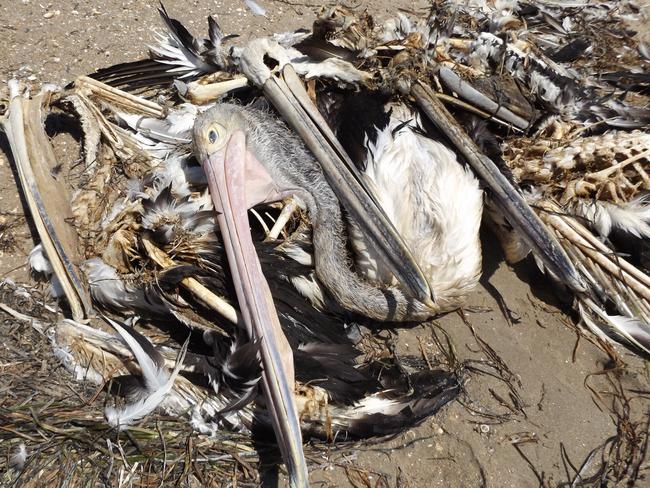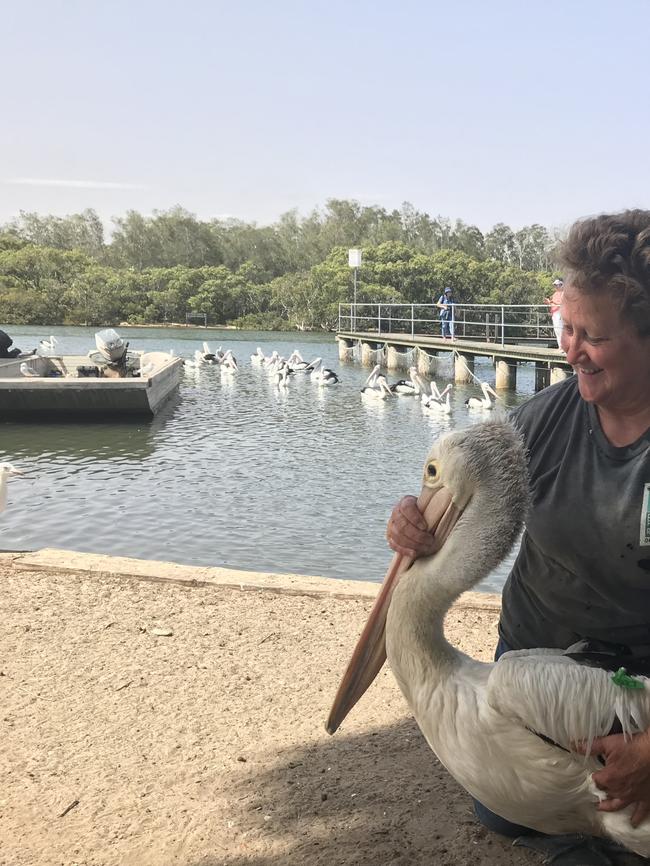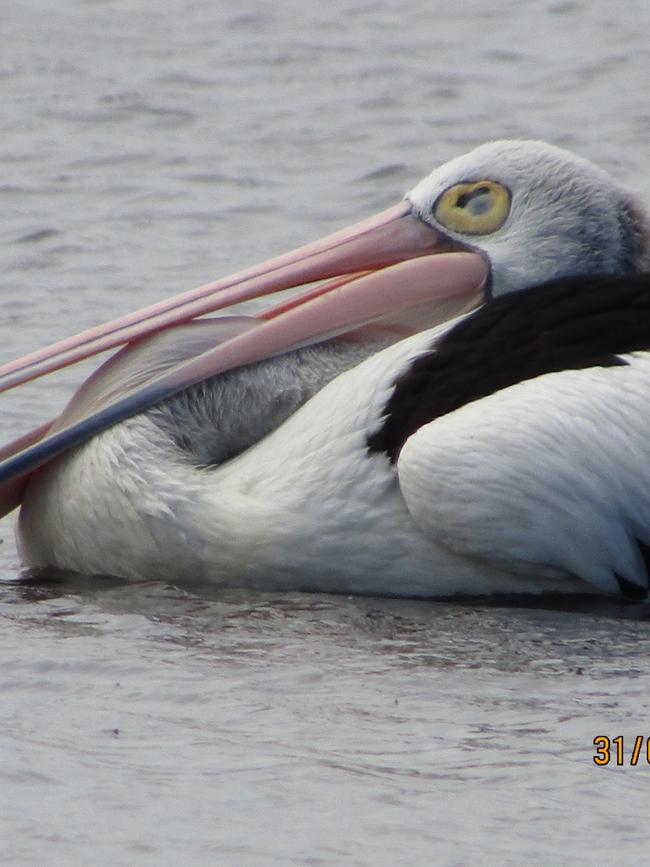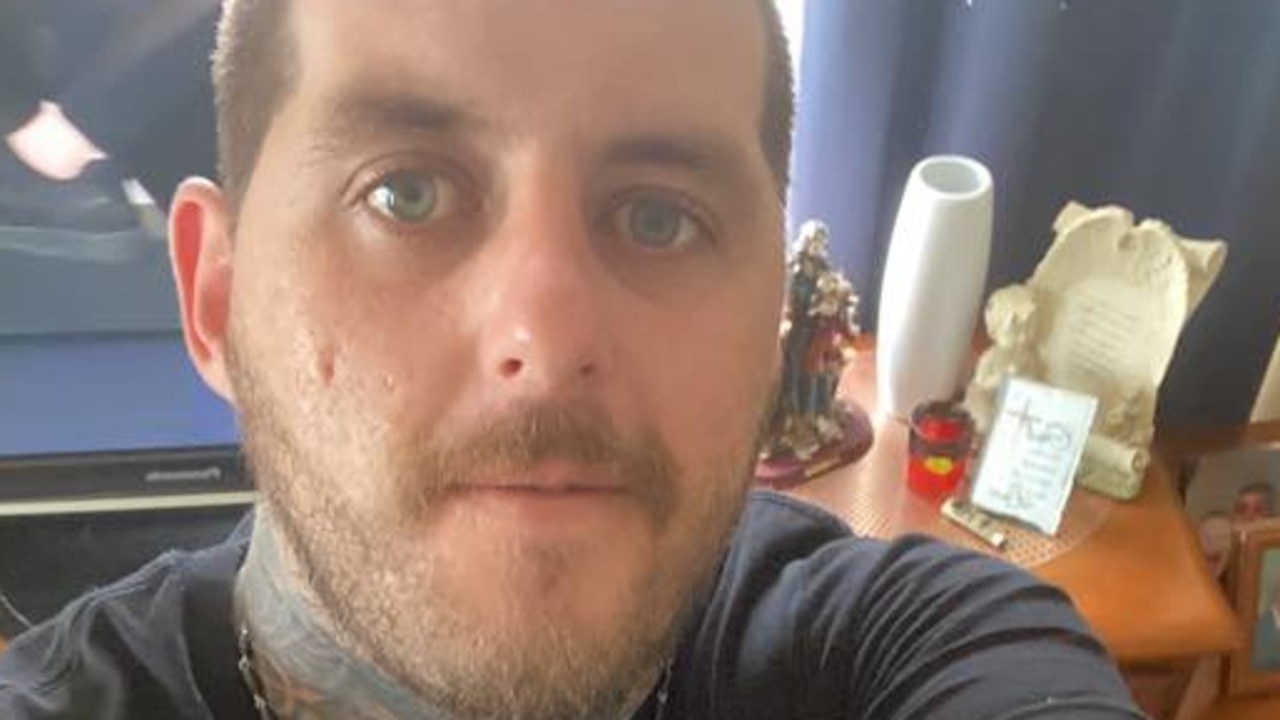Woy Woy pelican deaths: Researcher says toxic storm water still a problem
Almost five years after researcher Wendy Gillespie first went public about large numbers of pelicans dying around Woy Woy, things have got worse, not better.
Almost five years after researcher Wendy Gillespie first went public about large numbers of pelicans dying around Woy Woy, things have got worse, not better.
The iconic birds are still dying at the rate of about 100 per year, due — she believes — to a combination of polluted storm water, toxic blue green algal blooms driven by high summer temperatures and impacts from the recreational fishing industry.

Ms Gillespie said there had been about 30 pelican deaths in the area over the summer and about ten since a major storm before Christmas.
She said many of the deaths were adult or juvenile males with implications for future breeding.
Ms Gillespie is an environmental scientist who runs Pelican Rescue and Research, and is best known to many people as the woman who gives regular “pelican appreciation” talks outside Fisherman’s Wharf at Woy Woy.

She brought the plight of the iconic sea bird to public attention in 2015 when her research suggested that high ammonia levels around a Blackwall stormwater drain were contributing to pelican deaths.
The NSW Environmental Protection Authority launched an investigation and a year later released a report which blamed storm water toxins and algae for the deaths.
Central Coast Council said at the time that it had developed a strategy to reduce toxic algae in the region’s storm water.

However, Ms Gillespie said deaths had continued regardless.
She said a number of reports had shown pelican numbers were in decline nationally as well as on the Central Coast.
“A collaborative agency approach is the key to finding a permanent solution to algal blooms and their devastating impacts on our precious birds — pelicans aren’t the only species regularly impacted,” Ms Gillespie said.


She said the Environmental Protection Authority, National Parks and Wildlife Service and Gosford Council needed to re-engage with the with issue.
“Hopefully together we can determine a management approach that will finally end this most tragic suffering and unacceptable deaths of our most iconic and loved Pelicans,” she said.
NUMBER 27 — Who is he?
Wendy Gillespie rescues and cares for many sick and injured pelicans — including recently a tagged 40-year-old male known as ‘027’
After finding the bird struggling with the apparent affects of blue green algae poisoning, she took him to her property where he regained his health on her pond.
When he appeared to be well enough she released number 27 at Woy Woy near the Fisherman’s Wharf building.
Despite high hopes, Ms Gillespie was informed several days later that the bird had died.
She attributes his death to blue green algal toxin which she said caused a slow and painful death with the damage not always obvious externally.
“The toxin is a neuro and liver toxin that causes massive dehydration and causes fluid around the heart — so it’s not always evident externally,” she said.


